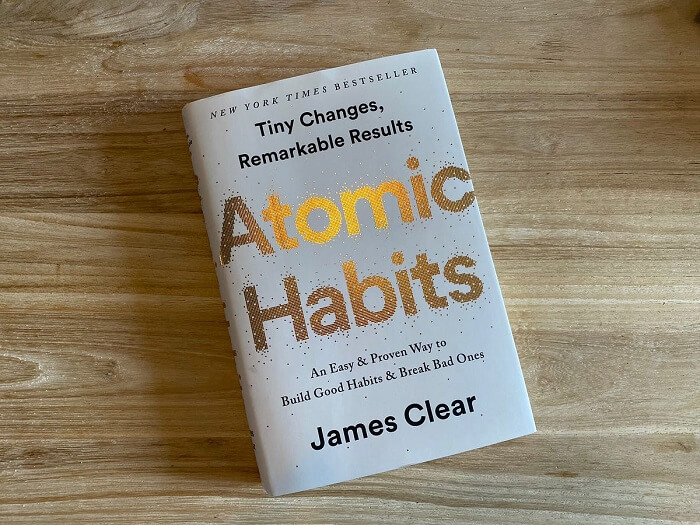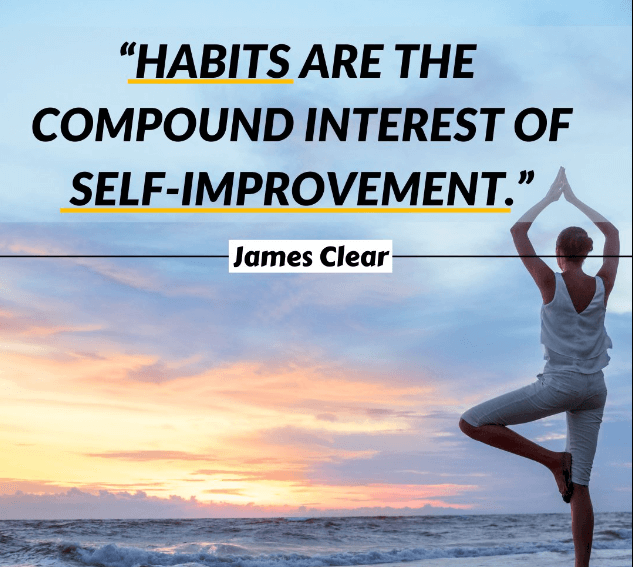Atomic Habits SummaryJames Clear's book Atomic Habits is a detailed, practical guidebook that shows you how to make changes in your behaviours and improve 1% of what you do every day. It is a powerful reference for changing destructive behaviours and developing new ones in four simple stages, explaining how little, gradual improvements in daily routines add up to significant, positive change over a period of time. In Atomic Habits, the author of the book offers readers an easily understood set of instructions for forming healthy habits and breaking undesirable ones using a framework known as the Four Laws of Behavioural Change. 
This book can be useful in letting you realize how habits develop and the things we can do to develop systems that will assist us in achieving our objectives by developing durable chains of signals, desires, reactions, and rewards. To understand the three main takeaways from Atomic Habits, to discover the four easy stages to creating a habit, and to obtain a handy reference guide for the techniques advised within the book, read the complete summary. A Three-Sentence Summary of the Book
The Big Five Concepts
Atomic Habit Summary
Lesson 1: All Habits Accept A Four-Step Sequence That Consists Of A Trigger, A Need, A Reaction, And A Reward.In terms of habits, James claims that the environment acts as an unseen force that influences people's attitudes. Our brain pays no attention to habits as they are routine behaviours. You may develop an understanding of the environmental signals that trigger certain behaviors and begin to change them. Being aware is the initial step in changing a behaviour since without it, you're sailing blind. For this reason, the very first step in carrying out any habit typically involves using a cue. Although it could not frequently be, it will almost always be outward. The ultimate three phases of the four-stage process then come next:
The cue provokes a desire, which prompts a reaction, which induces a reward, all of which satisfy the need and causes it to become connected with the cue. These four actions work in tandem to establish a neural feedback loop (cue, desire, response, reward; cue, craving, response, reward) that eventually enables you to develop automatic behaviors. This cycle is commonly referred to as a habit loop. All of these stages may be linked to create a useful framework that can be used to create healthy habits and get rid of undesirable ones. The framework, known as the "Four Laws of Behaviour Change," offers a straightforward list of guidelines for forming positive habits and shattering unhelpful ones. Lesson 2: To Develop Habits, You Need To Make Them Clear, Interesting, Simple, and Enjoyable.The four components of a habit are a trigger, a desire, a reaction, and a reward. James ultimately develops four principles of behavior modification each of which applies to one element of the loop according to the four-step pattern he shares. Here are the following with a few recommendations on how to apply them to encourage positive behavior and make negative behavior more difficult:
It can be used as encouragement for any kind of positive behavior, like exercising, focusing on an extracurricular activity, spending extra time with loved ones, etc. When it comes to harmful behaviours, though, do the reverse. Make them unnoticed, unappealing challenging, and unsatisfactory. For instance, you could cover up your puffs on cigarettes, levy fines, get rid of all lighters, and restrict the use of cigarettes to the winter months. Lesson 3: Keep A Record Of Your Habits And Make It Simple And Enjoyable To Make Sure You Hold To Your New HabitsDeveloping and altering habits is easier when you have a starting point like this. Taking action is the most successful strategy for learning and growth. Even though it isn't a process, planning often approaches an action. It's preferable to get oneself doing something because as you repeat positive behaviors, those actions gradually start to become habitual, entrenched, and, eventually, simpler. Even though you'll probably wish to begin working on several things at the same time earlier rather than later, balance is key. It ought to require a couple of minutes to get started with a new habit. Make it as basic and easy to stick to as you can while developing a new habit. If you are interested in working out more, rather than getting ready to spend an hour at the gym each day, choose to do ten push-ups when you wake up in the morning. That just takes a few minutes, and within 30 days, you'll have formed the habit of working out every day. From there, you can eventually include longer or more challenging workouts. Monitoring your behaviors using a habit tracker is a simple method to hold yourself responsible without becoming distracted. The concept is straightforward you continue a record of every habit you wish to adopt or give up, and then at the end of each day, you tick the ones that you've been successful with. This record may be kept on a single piece of paper, in a notebook, on a calendar, or using a digital tool like an app. The basis of this approach is why it is commonly referred to as the "Seinfeld productivity hack." Every day that Jerry Seinfeld was thinking about a joke, he believed he marked that particular day off his calendar with a large 'X'. His intention was to keep the chain connected as soon as possible. It's an easy-to-use method that works well for forming virtuous behaviours. You are far more likely to engage in the behaviour you'd like to do more of or less of once you are able to chain yourself into it. Making a choice once and letting it automatically change future choices is the best approach to do this. Say that you desire to make investments more often. You may set up a scheduled investment process to occur on a weekly basis rather than having to log into your bank account each week to make an investment. You don't need to worry about your automated investment once it has started; it operates in the background. Because habits are the self-improvement equivalent of compound interest, we should all begin this process right now. Lesson 4: Make Your Habit SatisfyingYou are more inclined to do what you love if you enjoy it. Since what is promptly praised is done again and again, this is why it is the fundamental principle of behavior modification. Things that are immediately criticised are avoided. Therefore, you have to identify ways to quickly feel rewarded when you start a new behaviour in order to feel good about repeating it. Success is more threatened by boredom rather than failure. Because our daily habits no longer excite us, we get tired of them. The result becomes predictable. We start to restrict our development in search of novelty when our routines become routine. You just need an appropriate level of victory to be satisfied and just a touch of "wanting" to feel motivated. One advantage of adhering to the Goldilocks Rule is this. Working on tasks that are enjoyable in difficulties is a great way to maintain interest in a habit if you find it fascinating. There are business professionals and investors who maintain a "decision journal" in which they list the significant choices they make each week, their justifications, and their anticipated outcomes. At the end of each month or year, they evaluate their decisions to determine which ones were good and which ones were bad. How a Responsible Partner Can Transform LifeYou can keep yourself on target by tapping into the decisions that leverage the assistance of a partner who shares responsibility. We care about what other individuals have to say about us, which plays a component in it. It is more possible that you will be carrying out attempts to harm someone even though you indicate that you might. Having a monetary penalty if you don't follow through on your commitments is one approach for improving the effectiveness of a partner in responsibility. For example, you might share with your accountability partner that you plan to write every day for the next 30 days. You'll be much more inclined to sit down to pen each day if you add a requirement that you have to give him $50 for each day you don't write. How to Enhance Your Strategies and Transform Your Performance from Good to GreatBy selecting the most suitable arenas for competing and the right habits to form, you can increase your probability of success in life. If you choose poorly, the exact reverse will happen. We are all endowed with multiple skills, and if you identify the ones you have, you can decide to develop habits in a sport that comes more easily to you and probably be more successful. The Goldilocks Concept: Sustaining Motivation in Life and at WorkAccording to the Goldilocks principle, people are most motivated when they are working on operations that are just beyond their present capabilities. If you've been engaged in something for a while, you'll probably become tired of it. Additionally, boredom will erode your willpower to go on. Therefore, it's essential to figure out ways of keeping up the pressure on oneself in a field to be inspired and enthusiastic about what you're doing in order to avoid failing because you grow tired and give up. Having a schedule might be beneficial. Consequences of Forming Positive HabitsYou can make progress towards expertise thanks to habits and consistent, focused effort. To keep updated on what is taking place during the time, it is important that you constantly remark on and analyze your performance, which is one essential stage along this journey. An evaluation of those things that are the most important to you on a yearly or quarterly basis may assist in indicating what is working well, what is doing alright, and what needs to be improved. |
 For Videos Join Our Youtube Channel: Join Now
For Videos Join Our Youtube Channel: Join Now
Feedback
- Send your Feedback to [email protected]
Help Others, Please Share









